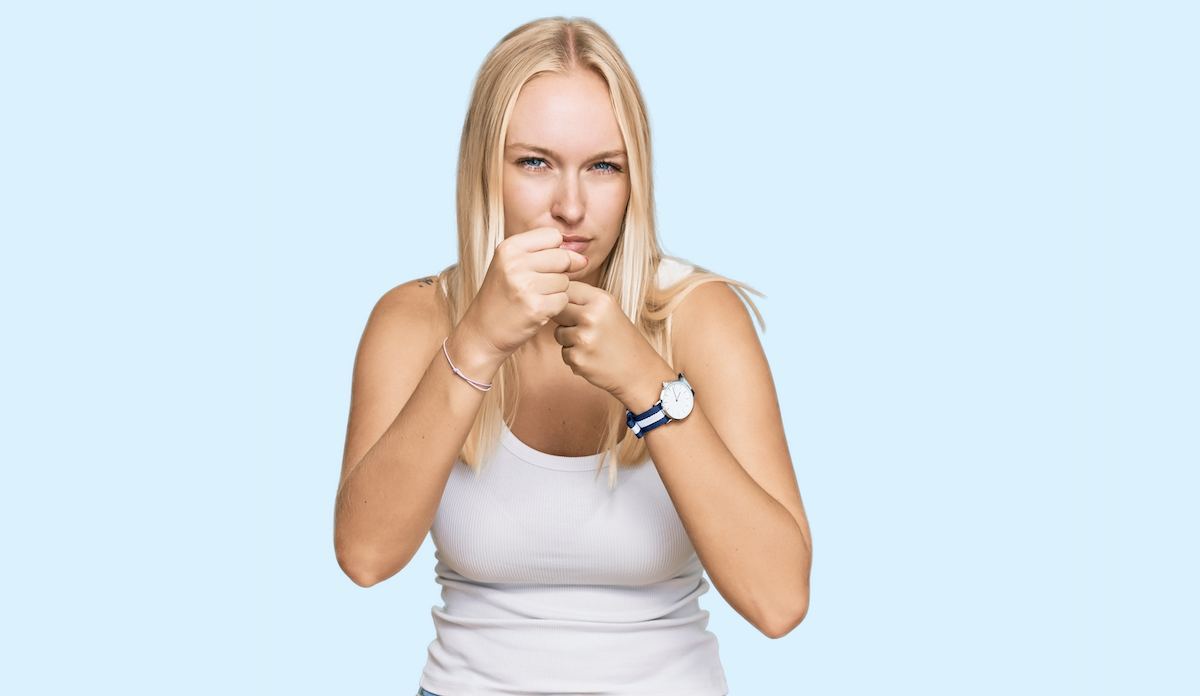The struggle of greasy roots is real. There is nothing quite like waking up in the morning to a greasy head of hair. The natural oils on your scalp protect your hair from damage, but too much oil causes greasy, weighed-down hair. With a few adjustments to your hair-care regimen, you can say farewell to greasy strands. Continue reading to learn how to stop struggling with greasy hair after 40.
What Causes Greasy Hair?
Your scalp is covered with sebaceous glands that secrete an oily substance called sebum. The scalp’s natural oils are essential to protect and moisturize the skin and hair. Most commonly, greasy hair is the result of overactive sebaceous glands. As you age, factors like medications, an imbalanced diet, stress, and hormone fluctuations can trigger an overproduction of sebum. Additionally, bad hair-care habits like over-washing your hair can kick oil production into overdrive.
Exfoliate Your Scalp
Good scalp-care is a one-way ticket to healthy, strong hair. Oil, dirt, and product residue builds up on your scalp and clogs your pores. Scalp buildup causes hair to appear oily and unclean. Furthermore, if left untreated, excessive scalp buildup can cause hair shedding and skin irritations. A scalp exfoliator is designed to slough away the gunk on your scalp to promote fresh, shiny tresses. By removing the dead skin cells, an exfoliator lowers the scalp’s enzyme population that causes the hair to shed. Ascalp exfoliator should contain clarifying ingredients, like activated charcoal and lactic acid, to thoroughly clean the scalp. Consider using a scalp exfoliator at least once a week.
Hair-Washing Schedule
It’s not always easy to establish a consistent hair-washing schedule. Hair washing is the obvious solution to get rid of greasy roots, but over-washing your hair can actually increase the greasiness. By over-washing your hair, you remove natural oils from the scalp. Your scalp responds to the loss of natural oil by producing more oil, which makes hair appear greasy. For this reason, it is important to find the right hair-washing routine that gets rid of the grease without stripping too much moisture from your hair. In general, those with thin hair will have to wash their hair more than those with thick hair. Try washing your hair 2-3 times a week to battle greasy roots.
Use a Clarifying Shampoo Once a Week
Clarifying shampoos are deep cleansers formulated to dissolve and wash away oil and product buildup from the scalp. A clarifying shampoo can be used once a week to offer a more intense clean for greasy hair. It will remove impurities from the scalp without stripping the natural oil from your hair. Consider using a clarifying shampoo with natural cleansing ingredients like apple cider vinegar and aloe vera.
Condition Correctly
Conditioners contain natural oils and butters to provide your strands with hydration and protection from damage. However, using too much conditioner can leave strands appearing greasy and flat. This may vary based on your hair type, but it is recommended to apply a quarter-size amount of conditioner to your hair. Additionally, concentrate the conditioner on the ends of your hair. Your ends receive the least oil from the scalp and are often styled more than other parts of the hair.
Use a Dry Shampoo
Dry shampoo is a powder or spray that offers a water-free solution for washing your hair. Dry shampoo absorbs oil and grease from your hair to create cleaner looking locks. It is a quick fix to hide greasy roots after a workout or to freshen up a hairstyle. Keep in mind, dry shampoo should not be used as a replacement for washing your hair. The excessive use of dry shampoo can clog your pores and cause scalp irritations. Consider using a natural, starch-based dry shampoo, like the one from Better Not Younger. This formula contains tapioca starch, which is a plant-based oil absorbing powder. A good dry shampoo should add volume, support scalp health and dissolve quickly.
Clean Your Brushes and Hot Tools
When you brush or style greasy hair, your brush and hot tools will pick up oil and product residue. Your styling tools hold on to the gunk, which can then transfer to your clean hair. Make sure to remove hair from your brush and clean it with a gentle shampoo. You may also wipe down your hot tools with warm water or rubbing alcohol.
Conclusion
In no world are greasy roots considered hair goals. Although the scalp’s natural oils benefit us in many ways, there can be too much of a good thing. The right products, like a scalp exfoliator and clarifying shampoo, paired with good hair-care habits is a recipe for a fresh, clean mane.



 Bitcoin
Bitcoin  Ethereum
Ethereum  Tether
Tether  XRP
XRP  Solana
Solana  USDC
USDC  TRON
TRON  Lido Staked Ether
Lido Staked Ether  Cardano
Cardano  Avalanche
Avalanche  Toncoin
Toncoin